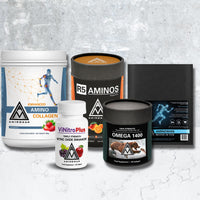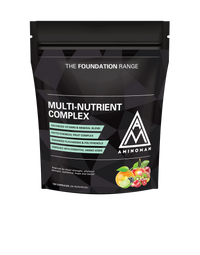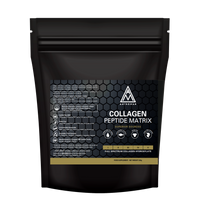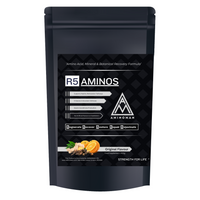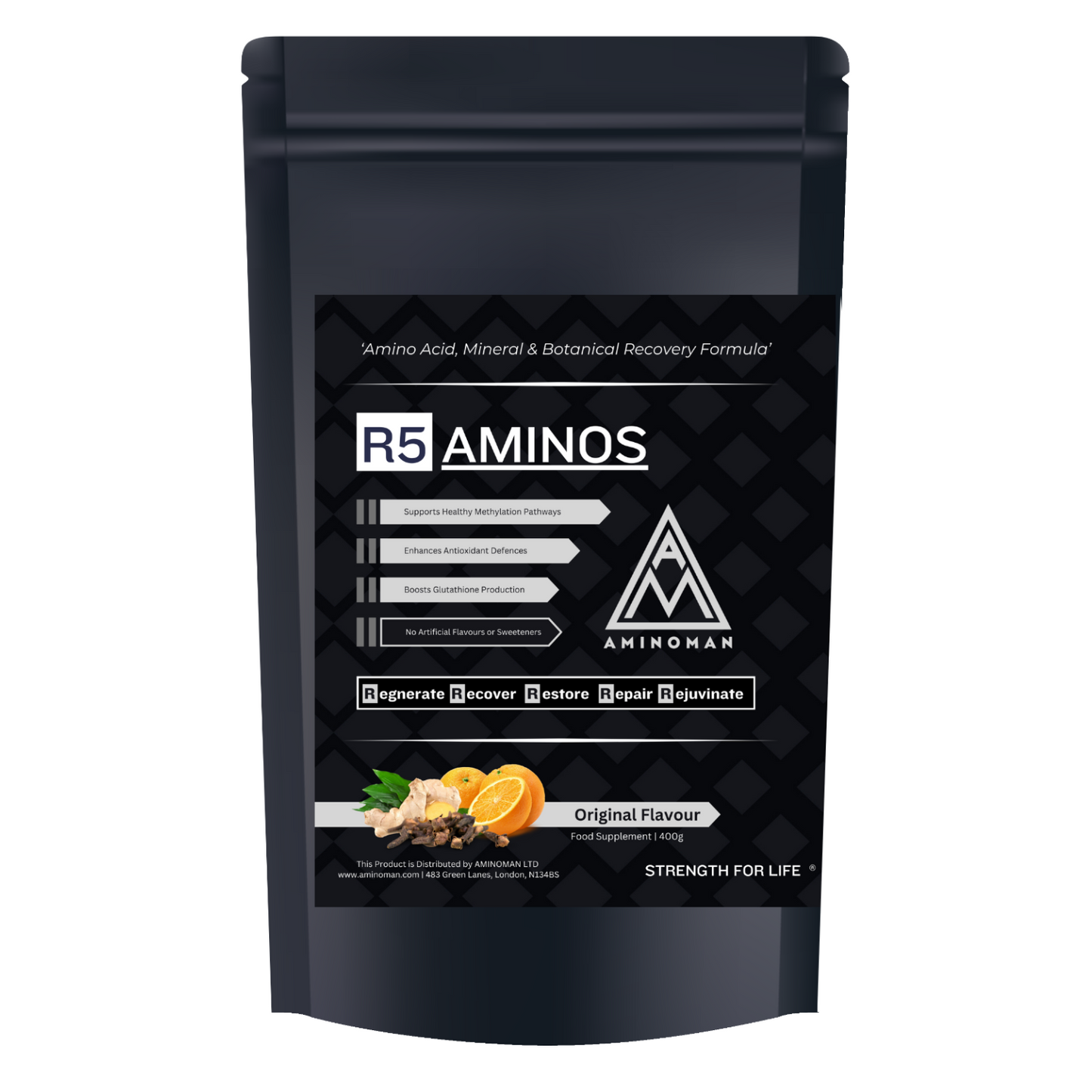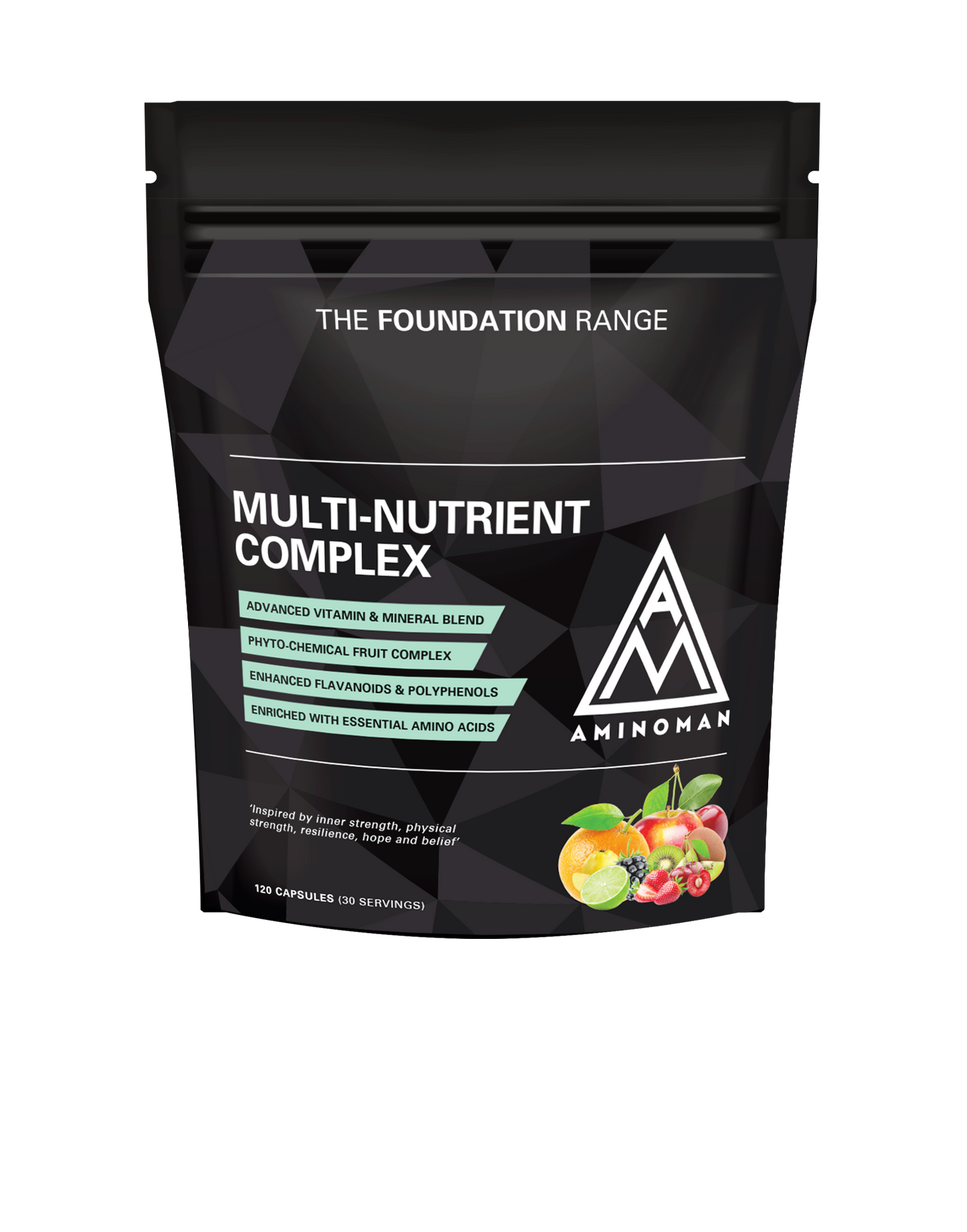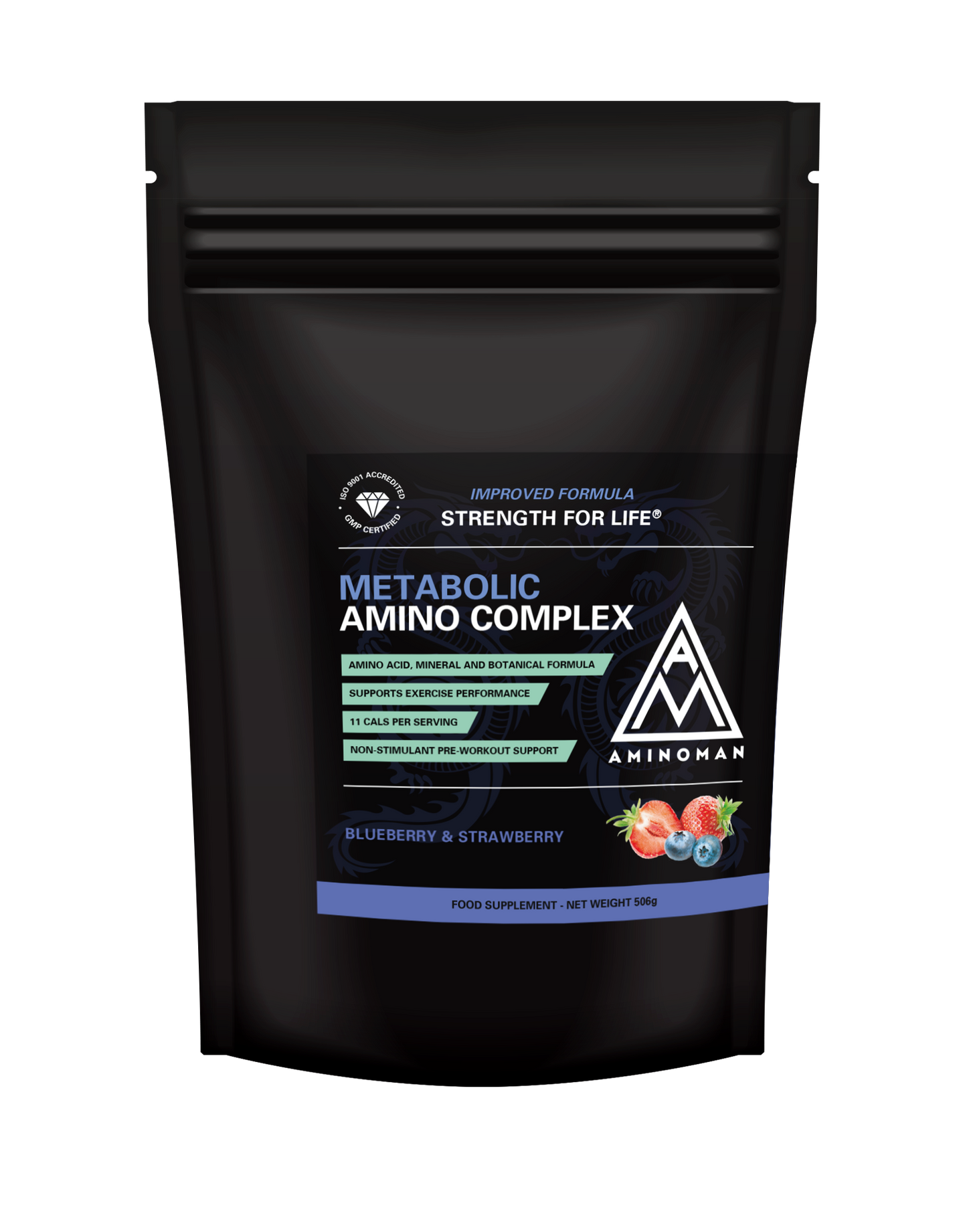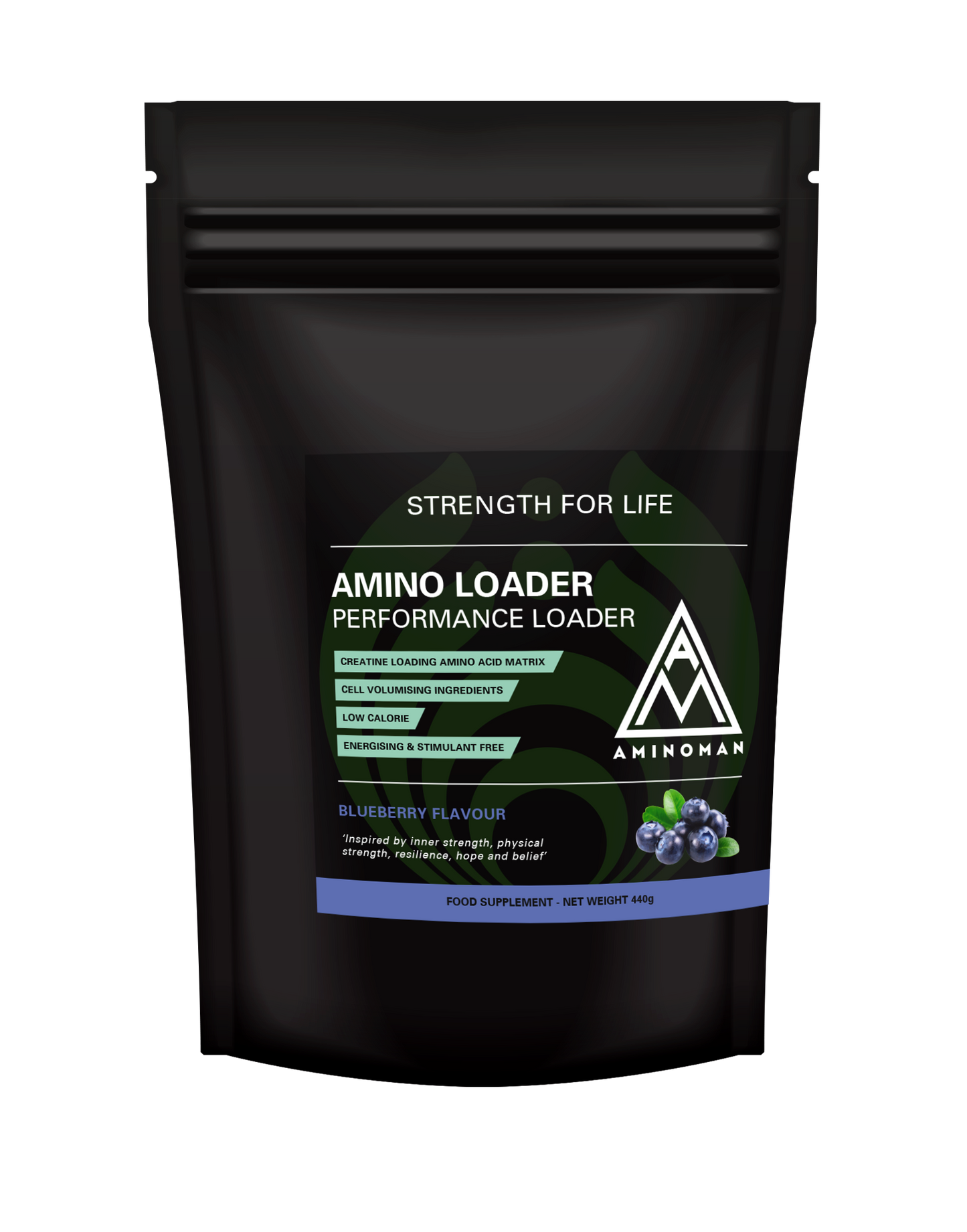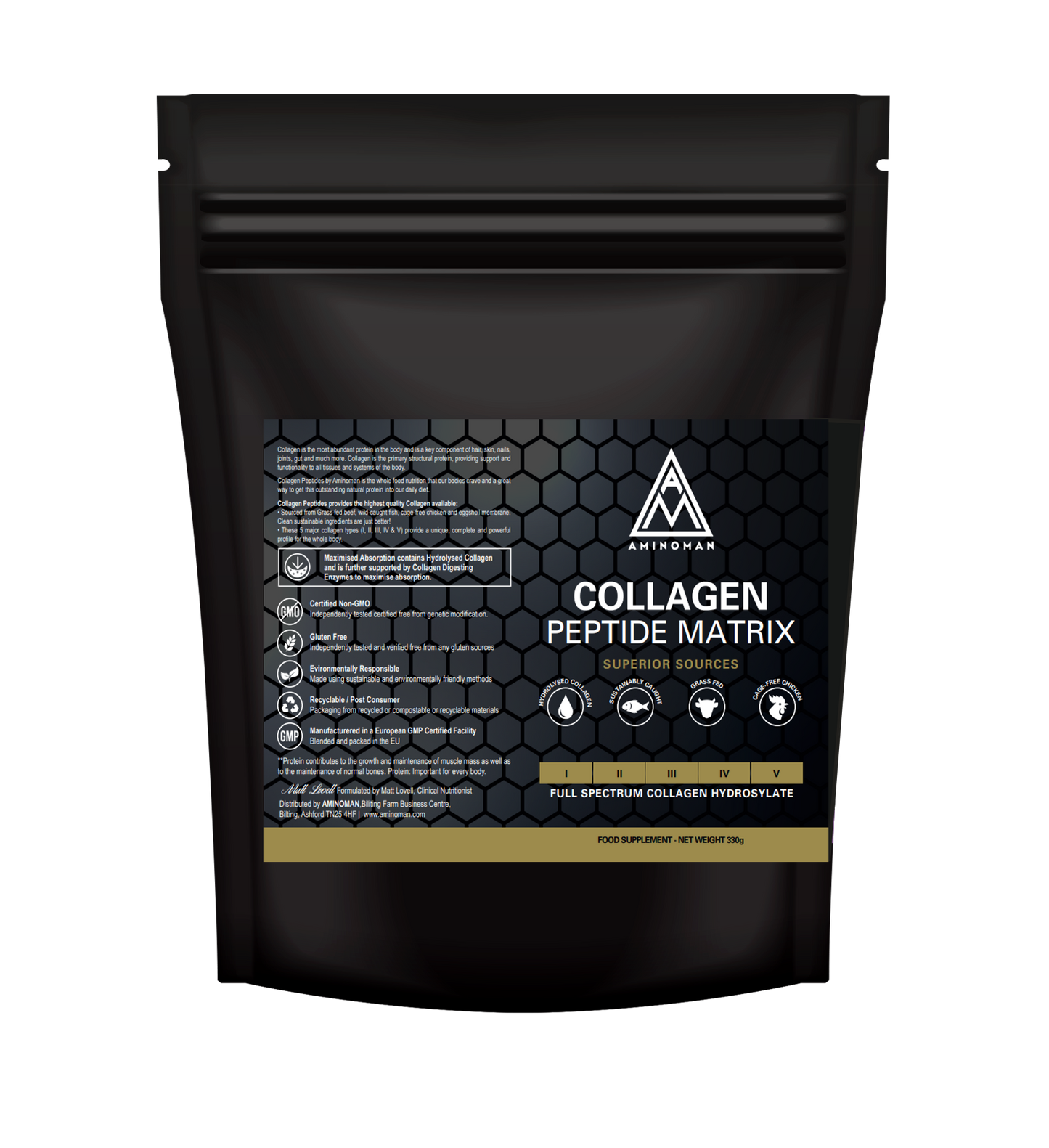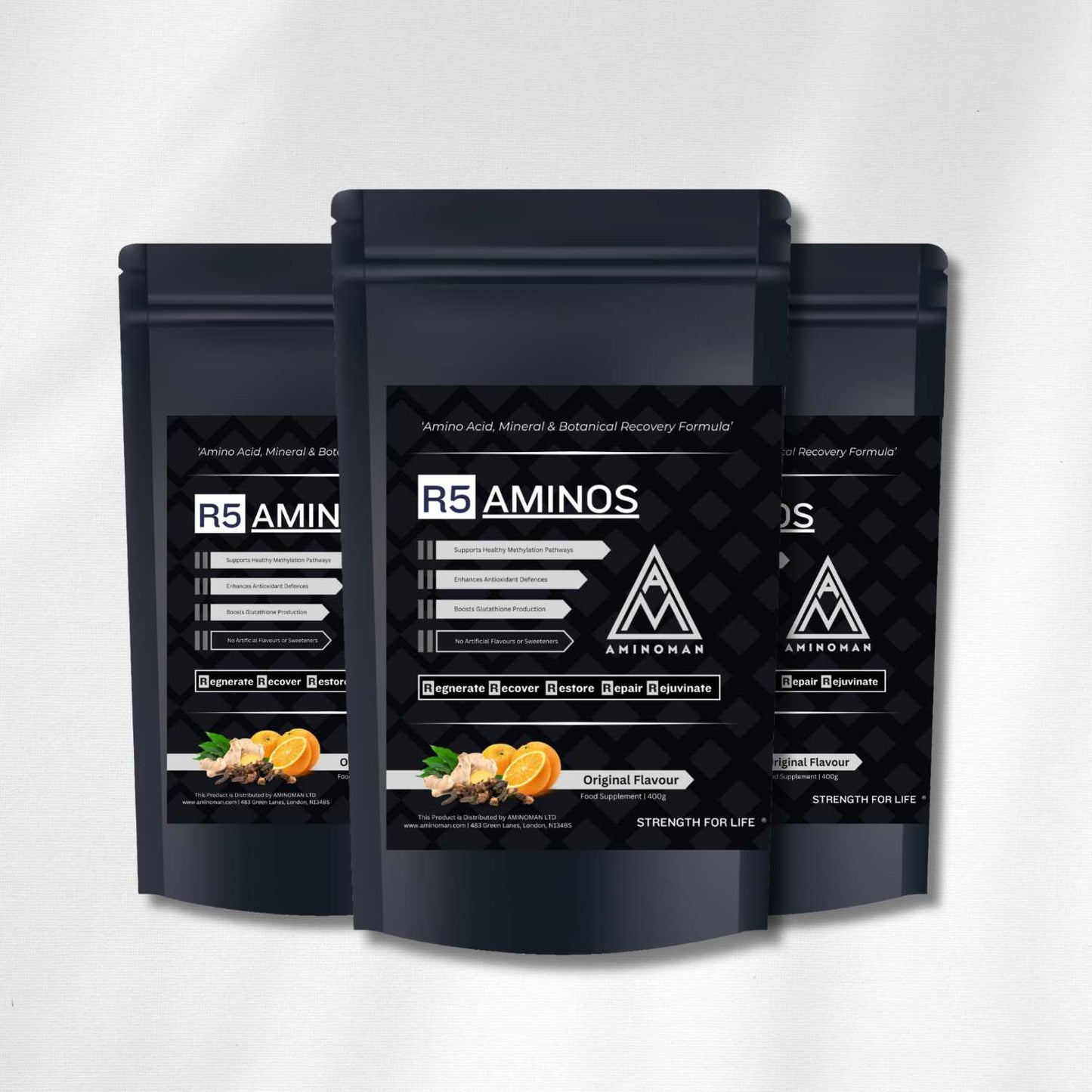Each of the ingredients in this formula has been chosen for one (or both) of two reasons:
- It may play a direct role in supporting fat metabolism and weight control
OR
- It can have an anti-inflammatory effect.
So before we get into the details of the ingredients, it’s worth clarifying why substances that have an anti-inflammatory effect could help with fat loss or weight control.
It’s now known that obesity is an inflammatory condition. In other words, people who are obese (or possibly even overweight) have been shown to have chronic low-level inflammation in certain cells and tissues of their body [1]. This is not necessarily inflammation that we can feel, but hidden inflammation, especially in fatty tissue (adipose tissue) [2]. This concept is so widely recognised that this type of inflammation has even been given a specific name: ‘metaflammation’ [3]. Inflammation may then contribute to insulin resistance and possibly leptin resistance too (leptin is known as the ‘satiety hormone’ as it helps to stop us feeling hungry), which can then contribute to further weight gain, in a vicious cycle. Inflammation is also one of the potential causes of the diseases related to obesity, such as heart disease and even cancer.
Therefore, anything that helps to reduce inflammation could have a beneficial effect in supporting health and a return to a healthy weight. And this could apply not only to those who are obese, but anyone who has extra pounds to lose.
In addition, anti-inflammatory plant extracts can be supportive for recovery after exercise, as well as pain in the joints or muscles, or injury-related pain.
Green tea
Green tea is one of the most widely researched foods for its potential to support fat metabolism and weight control. In addition to its content of caffeine, which is known to increase energy expenditure (calorie burning), the catechins (a type of polyphenol) found in green tea are also thought to play a role.
In one of the earlier human studies investigating this effect of green tea, ten men were given one of three treatments: a green tea extract containing caffeine and epigallocatechin gallate (a catechin), a caffeine-only supplement, or a placebo, each taken in three doses over 24 hours. When the men took the green tea extract, their energy expenditure over 24 hours was found to increase by 4% relative to the placebo (i.e. they burned 4% more calories). This would be equivalent to an extra 100 calories per day if their basic daily calorie expenditure was 2,500 calories. When the men took the caffeine only, this had no effect, indicating it’s more than just the caffeine at work. [4]
Two meta-analysis studies provide more sound evidence that green tea may have a beneficial effect for weight management and body composition. (Meta-analyses are considered the ‘gold standard’ in clinical research, as they analyse the results of several high-quality clinical trials rather than just looking at a single result.) The first of these – published in the American Journal of Clinical Nutrition – looked at the results of 15 studies on a total of 1,243 patients. The authors found that taking green tea catechins together with caffeine resulted in an average decrease in BMI of 0.55 points, and a decrease in body weight of 1.38 kg compared with caffeine alone. [5] The second paper, published in the journal Obesity Reviews, found that both caffeine alone and caffeine with green tea catechins increased calorie burning over 24 hours by about 100 calories (which is in line with the small study quoted above [4]). But only the combination of caffeine with catechins significantly increased fat oxidation (the breakdown of fats for energy). [6]
In addition, green tea may have beneficial effects in fat metabolism by helping to control inflammation. It’s been established that green tea catechins have an anti-inflammatory effect [7]. In addition, green tea may specifically reduce inflammation in the hypothalamus, the part of the brain that regulates metabolism, helping to maintain its normal function. [8]
Turmeric
Turmeric is well known as a spice used in curries. But it’s also been used for medicinal purposes for thousands of years, especially in Indian Ayurvedic medicine. Modern research has found that compounds in turmeric – especially curcumin – can have potent anti-inflammatory activity.
Studies have also found that curcumin in particular may promote weight loss. It may work in several ways, including having a direct anti-inflammatory effect in fatty tissue and fat cells [9], increasing production of adiponectin (a hormone that improves our sensitivity to insulin and has an anti-inflammatory effect), helping to reduce insulin resistance and hyperglycaemia (high blood sugar), and interacting with proteins in many types of cells throughout the body, including liver cells, pancreatic cells and muscle cells [10].
As well as its anti-inflammatory activity, turmeric (or curcumin) has been found to have multiple potential benefits of our health. These include antioxidant, wound-healing, anti-microbial, anti-cancer and pain-relieving activities. [11]
Boswellia
Boswellia is Indian frankincense – a tree that’s native to Africa and Asia. The ‘therapeutic’ part of the tree is the resin. Like turmeric, boswellia resin has a long history of use for medicinal purposes in Indian Ayurvedic medicine.
The most researched property of boswellia is its anti-inflammatory activity. Boswellic acids – substances in boswellia resin – have been found to inhibit the synthesis of leukotrienes, natural chemicals released in the body that can promote inflammation. [12, 13] Boswellic acids are thought to be the most active constituents of boswellia [12], which is why most boswellia that is used in nutritional supplements is standardised to contain a specific percentage of these compounds (as in this formula).
Boswellia has also shown potential to support blood glucose control. In diabetic rats, it was found that a single dose of boswellia could decrease their blood glucose levels; and continued use decreased triglycerides and cholesterol too [14]. However, there don’t seem to be any published human clinical trials to back this up as yet.
Ginger
Ginger also has known anti-inflammatory properties [15].
Ginger has also been researched specifically for its potential to support weight management. In a small study by researchers at Columbia University, ten men were given 2g of ginger powder dissolved in water after breakfast and monitored for six hours, and also monitored under the same conditions but without taking the ginger. It was found that the ginger increased the thermic effect of the food (the amount of calories burned in actually digesting the food). The men also reported feeling fuller and less hungry when taking the ginger. [16]
Animal studies have also examined this effect. In a study by researchers in Egypt, ginger supplementation was compared with orlistat (a medication that blocks fat absorption) for its potential to support weight loss in rats fed a high-fat diet. The researchers reported that the ginger reduced body weight in the rats, without some of the negative side effects of orlistat. [17] A later study also found that rats that were put on a high-fat diet for four weeks and also given ginger had reduced body weight and fat mass compared to those on the same diet but not given ginger. Those on the ginger also showed lower blood glucose levels, and lower cholesterol and triglycerides. [18]
More research is needed to prove that ginger can help with weight management or fat loss in humans, but the indications are that it may have a positive effect.
Chocamine
Chocamine is a cocoa extract. As well as providing flavour, Chocamine contains natural active substances found in cocoa, including theobromine (a substance similar to caffeine), polyphenols, and a substance called phenylethylamine (often abbreviated to PEA).
One of the beneficial actions of dark chocolate or cocoa may be improving insulin sensitivity, which leads to better blood sugar control. This means it could help to manage cravings and support weight management or fat loss too.
Most of the studies that have shown benefits for insulin sensitivity have been carried out on people with high risk factors for heart disease, as cocoa and chocolate are thought to have several beneficial effects for heart health. A review article published in the Journal of Nutrition analysed 24 separate clinical trials on cocoa – comprising over 1,000 participants – with the overall results indicating that cocoa consumption could significantly decrease insulin resistance (i.e. improve insulin sensitivity) in these participants [19]. A later review of 42 studies also found similar results [20]. Both these analyses indicated that cocoa could slightly reduce blood pressure and improve cholesterol levels too, confirming its heart health benefits. And in another recently published review study, the authors state that ‘cocoa flavonols have been proved to enhance glucose uptake through the promotion of glucose transport’ [21].
Obviously, this doesn’t mean consuming ordinary chocolate is necessarily going to help with fat loss! Chocamine is a concentrated cocoa extract, without added sugar or fat, that’s designed to provide only the beneficial constituents of cocoa.
Quercetin
Quercetin is a type of flavonoid that’s found in small amounts in many vegetables and fruits, including onions, apples, kale and berries. It’s been reported to have numerous beneficial effects for our health, including antioxidant and anti-inflammatory activity [22].
Like many of the other ingredients in this formula, quercetin could support weight management by regulating inflammation. In-vitro (‘test tube’) and animal studies have shown that it could reduce obesity-induced inflammation [23] – the ‘metaflammation’ discussed above.
Quercetin could work in various other ways too. It may increase insulin sensitivity and improve glucose control [24, 25]; and in-vitro studies have indicated that it can reduce adipogenesis (the building of new fat cells) [26]. Studies on mice have shown that it can prevent fat gain associated with a high-fat diet [24] and reduce body weight in mice – by as much as 40% in one study [23].
Again, human studies are limited. But quercetin shows great potential to help regulate body fat and support fat metabolism.
References
- Gregor MF, Hotamisligil GS. Inflammatory mechanisms in obesity. Annu Rev Immunol. 2011;29:415-45.
- Bastard JP et al. Recent advances in the relationship between obesity, inflammation, and insulin resistance. Eur Cytokine Netw. 2006 Mar;17(1):4-12.
- Lumeng CN, Saltiel AR. Inflammatory links between obesity and metabolic disease. J Clin Invest. 2011 Jun;121(6):2111-7.
- Dulloo AG et al. Efficacy of a green tea extract rich in catechin polyphenols and caffeine in increasing 24-h energy expenditure and fat oxidation in humans. Am J Clin Nutr. 1999 Dec;70(6):1040-5.
- Phung OJ et al. Effect of green tea catechins with or without caffeine on anthropometric measures: a systematic review and meta-analysis. Am J Clin Nutr. 2010 Jan;91(1):73-81.
- Hursel R et al. The effects of catechin rich teas and caffeine on energy expenditure and fat oxidation: a meta-analysis. Obes Rev. 2011 Jul;12(7):e573-81.
- Singh R et al. Green tea polyphenol epigallocatechin-3-gallate: inflammation and arthritis. [corrected]. Life Sci. 2010 Jun 19;86(25-26):907-18.
- Okuda MH et al. Green tea extract improves high fat diet-induced hypothalamic inflammation, without affecting the serotoninergic system. J Nutr Biochem. 2014 Oct;25(10):1084-9.
- Bradford PG. Curcumin and obesity. Biofactors. 2013 Jan-Feb;39(1):78-87.
- Shehzad A et al. New mechanisms and the anti-inflammatory role of curcumin in obesity and obesity-related metabolic diseases. Eur J Nutr. 2011 Apr;50(3):151-61.
- Gupta SC et al. Discovery of curcumin, a component of golden spice, and its miraculous biological activities. Clin Exp Pharmacol Physiol. 2012 Mar;39(3):283-99.
- Lalithakumari K et al. Safety and Toxicological Evaluation of a Novel, Standardized 3-O-Acetyl-11-keto-beta-Boswellic Acid (AKBA)-Enriched Boswellia serrata Extract (5-Loxin(R)). Toxicol Mech Methods. 2006;16(4):199-226.
- Ammon HP et al. Mechanism of antiinflammatory actions of curcumine and boswellic acids. J Ethnopharmacol. 1993 Mar;38(2-3):113-9.
- Kavitha JV et al. Hypoglycemic and other related effects of Boswellia glabra in alloxan-induced diabetic rats. Indian J Physiol Pharmacol. 2007 Jan-Mar;51(1):29-39.
- Mashhadi NS et al. Anti-oxidative and anti-inflammatory effects of ginger in health and physical activity: review of current evidence. Int J Prev Med. 2013 Apr;4(Suppl 1):S36-42.
- Mansour MS et al. Ginger consumption enhances the thermic effect of food and promotes feelings of satiety without affecting metabolic and hormonal parameters in overweight men: a pilot study. Metabolism. 2012 Oct;61(10):1347-52.
- Mahmoud RH, Elnour WA. Comparative evaluation of the efficacy of ginger and orlistat on obesity management, pancreatic lipase and liver peroxisomal catalase enzyme in male albino rats.Eur Rev Med Pharmacol Sci. 2013 Jan;17(1):75-83.
- Shalaby MA, Saifan HY. Some pharmacological effects of cinnamon and ginger herbs in obese diabetic rats. J Intercult Ethnopharmacol. 2014 Oct-Dec;3(4):144-9.
- Shrime MG et al. Flavonoid-rich cocoa consumption affects multiple cardiovascular risk factors in a meta-analysis of short-term studies. J Nutr. 2011 Nov;141(11):1982-8.
- Hooper L et al. Effects of chocolate, cocoa, and flavan-3-ols on cardiovascular health: a systematic review and meta-analysis of randomized trials. Am J Clin Nutr. 2012 Mar;95(3):740-51.
- Martin MÁ et al. Anti-diabetic actions of cocoa flavanols. Mol Nutr Food Res. 2016 Jan 29. doi: 10.1002/mnfr.201500961. [Epub ahead of print]
- Nabavi SF et al. Role of quercetin as an alternative for obesity treatment: you are what you eat! Food Chem. 2015 Jul 15;179:305-10.
- Seo MJ et al. The inhibitory effects of quercetin on obesity and obesity-induced inflammation by regulation of MAPK signaling. J Nutr Biochem. 2015 Nov;26(11):1308-16.
- Henagan TM et al. In vivo effects of dietary quercetin and quercetin-rich red onion extract on skeletal muscle mitochondria, metabolism, and insulin sensitivity. Genes Nutr. 2015 Jan;10(1):451.
- Yan SX et al. Hypoglycemic and hypolipidemic effects of quercetin and its glycosides. Zhongguo Zhong Yao Za Zhi. 2015 Dec;40(23):4560-7.
- Seo YS et al. Quercetin prevents adipogenesis by regulation of transcriptional factors and lipases in OP9 cells. Int J Mol Med. 2015 Jun;35(6):1779-85.
- Morimoto C et al. Anti-obese action of raspberry ketone. Life Sci. 2005 May 27;77(2):194-204.
- Park KS. Raspberry ketone increases both lipolysis and fatty acid oxidation in 3T3-L1 adipocytes. Planta Med. 2010 Oct;76(15):1654-8.
- Lopez HL et al. Eight weeks of supplementation with a multi-ingredient weight loss product enhances body composition, reduces hip and waist girth, and increases energy levels in overweight men and women. J Int Soc Sports Nutr. 2013 Apr 19;10(1):22.
- Thom E et al. The effect of chlorogenic acid enriched coffee on glucose absorption in healthy volunteers and its effect on body mass when used long-term in overweight and obese people. J Int Med Res. 2007 Nov-Dec;35(6):900-8.
- Henry-Vitrac C et al. Contribution of chlorogenic acids to the inhibition of human hepatic glucose-6-phosphatase activity in vitro by Svetol, a standardized decaffeinated green coffee extract. J Agric Food Chem. 2010 Apr 14;58(7):4141-4.
- Flanagan J et al. Lipolytic activity of Svetol®, a decaffeinated green coffee bean extract. Phytother Res. 2014 Jun;28(6):946-8.
- Song SJ et al. Decaffeinated green coffee bean extract attenuates diet-induced obesity and insulin resistance in mice. Evid Based Complement Alternat Med. 2014;2014:718379.
- Examine.com. (2016). Green Coffee Extract - Scientific Review on Usage, Dosage, Side Effects | Examine.com. [online] Available at: http://examine.com/supplements/Green+Coffee+Extract/ [Accessed 10 Jun. 2016].


